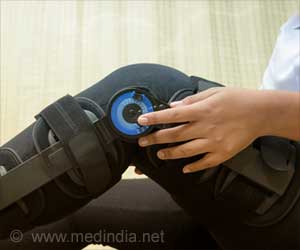An ultrathin, skin-conforming sensor-resembling a peel-away tattoo-provides precise and continuous monitoring of circulation within the smallest vessels.

TOP INSIGHT
Continuous monitoring of variations in blood flow could be valuable in assessing conditions in clinical and research scenarios.
In addition to diabetes and chronic hypertension, conditions that affect the health of blood vessels and surrounding tissue include kidney disease, autoimmune and other inflammatory conditions, the effects of aging and smoking, and a class of cholesterol-related abnormalities called dyslipidemias. Continuous monitoring of variations in blood flow could also be valuable in assessing these conditions in clinical and research scenarios.
The pilot-tested device, co-developed with researchers at Northwestern University, is among a variety of tools available to measure blood flow. Other devices, such as ones based on optical or acoustic methods, however, do not work as well when the body is in motion, and thus require a patient or study subject to remain still.
The researchers overcame these challenges with the soft, skin-conforming electronic device that is applied directly onto the skin and uses thermal sensors to collect data on changes in temperature, including those caused by changes in blood flow. The device can also apply a small amount of heat in order to test a subject's responses. In this mode, a miniature pad in the device generates a heat impulse, while 14 surrounding thermal sensors detect the resulting heat flux. The signal is sent to a computer that calculates the velocity of blood flow occurring within two millimeters of the skin surface.
In their study, the researchers placed the sensor on a study subject's forearm, over a large, visible vein, and then applied pressure for 60 seconds at various positions near the vein. Each time, the device sensed corresponding reductions in blood flow. The researchers also used a thermal camera that measures infrared signals to confirm that the blood-flow sensor measurements were accurate, even when the subject moved around.
According to co-author Alexander Gorbach, Ph.D., head of NIBIB's Infrared Imaging and Thermometry Unit, the tests performed with the thermal sensor helped to establish a number of guidelines for its use, such as optimal placement of the sensor, and how deeply under the skin's surface the device can assess blood flow. At this stage, the device shows promise as a low-cost, readily-fabricated sensor for use in ambulatory or hospital-based settings. Because of the link between chronic hypertension and some types of vascular diseases, the new sensor may be a useful addition to studies of hypertension and its consequences.
Source-Newswise
 MEDINDIA
MEDINDIA




 Email
Email





